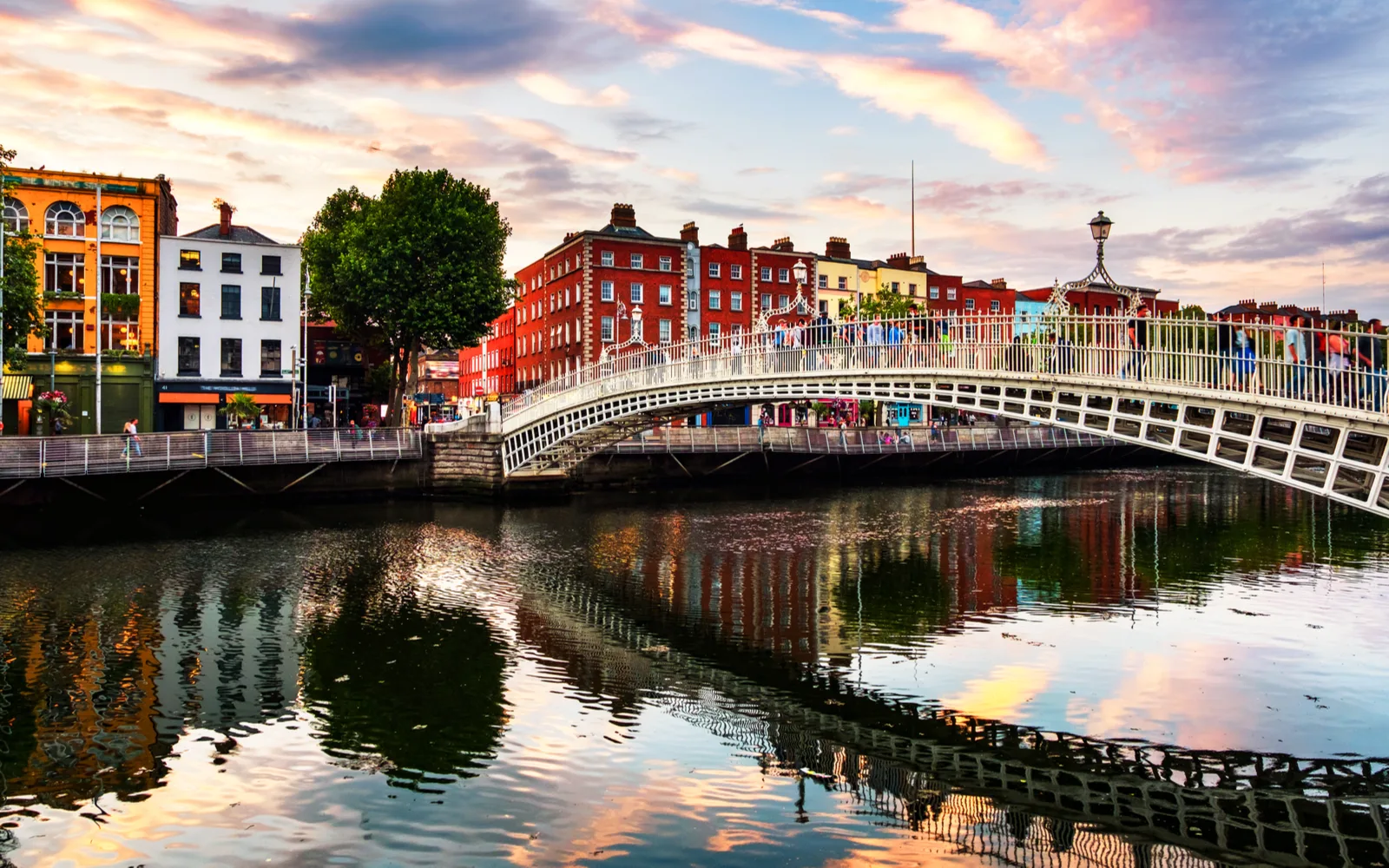What's the best time to visit Dublin?
The best time to visit Dublin is during the summer months of June to August, when you’re most likely to experience mild weather, making it perfect for exploring the city and participating in numerous outdoor events. Summer brings the city to life with major festivals like Bloomsday, Dublin Pride, and the Longitude Festival, alongside a high chance of sunny days and the lowest rainfall rates of the year.
The city of Dublin, Ireland’s capital, is packed with history and culture, but is also a great destination for those looking for a good time.
It’s home to storied artifacts and buildings dating back hundreds of years in Ireland’s history, from the medieval Book of Kells in Trinity College to Kilmainham Gaol, a somber reminder of Ireland’s struggle for independence.
That doesn’t mean all of Dublin is a dry history lesson. Try some typical local brew at the Guinness Storehouse, make sure to have a pint at Temple Bar, and pay homage to literary legends old or new at the Museum of Literature—or the many independent bookstores.
Dublin is also a great base for exploring the rest of Ireland, which is something you should consider when planning your trip. Keep reading to learn more about the best times to visit.
Overall Best Time to Visit Dublin
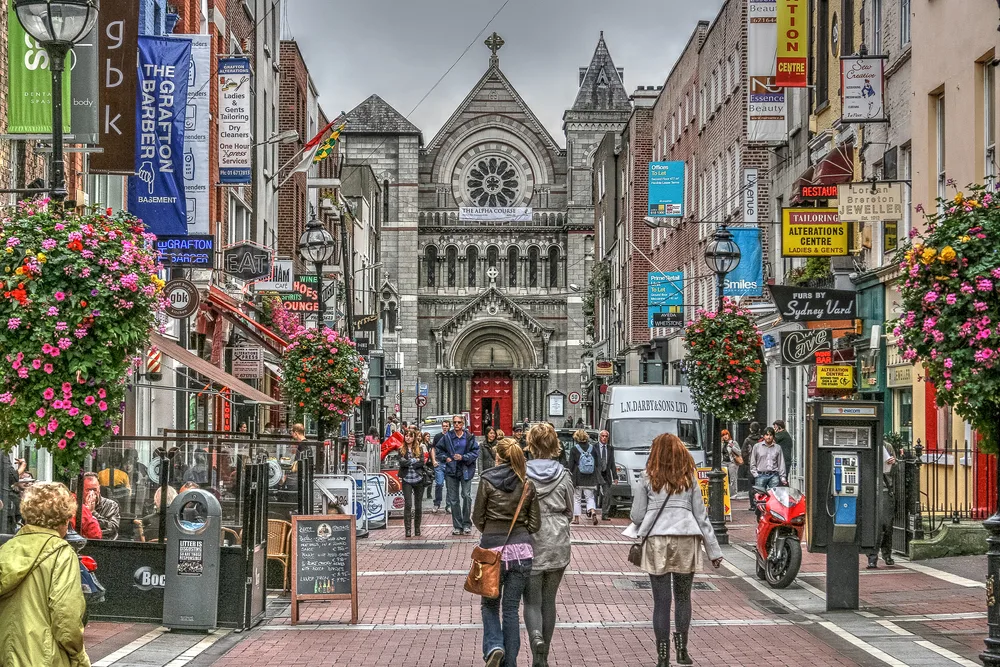
jamegaw/Shutterstock
The best time to visit Dublin is in the summer (June–August), when even the famously blustery Irish weather is at its mildest, and there are the most events happening throughout the city.
Irish people like to say, “If you don’t like the weather, just wait five minutes.” The weather is famously unpredictable, with frequent rain, blustery days, and storms that seem to crop up out of nowhere.
While you can expect rain and sometimes chilly weather all year long, summer is the best chance you’ll get to experience good weather in Dublin.
While it rarely gets hot in Ireland, July is the warmest month, with average daily temperatures of 67 degrees Fahrenheit. More importantly, summer is the season when you have the highest chance of a sunny day (51%).
Most summer months only have, on average, eight rainy days per month, which is the lowest all year long (this is still Ireland, after all). This makes summer the best time not just to visit Dublin but to use the city as a base for excursions to Ireland’s countryside and visit dramatic sights like the Cliffs of Moher without getting rained on.
The few months of warm and sunny weather drive Dubliners outside, making the city feel bustling with life. Expect to find people lounging in parks like Phoenix Park or going for a stroll.
During this season, Dublin is packed with tourists, but that also contributes to the atmosphere that the city is where everything is happening.
The city government and local businesses take advantage of the warmer weather to organize outdoor events they can’t during the rest of the year, so expect plenty of regular activities like free concerts.
This is also peak festival season in Ireland, with popular events like:
- Bloomsday Festival (June)
- Dublin Pride (June)
- Longitude Festival (June/July)
- Dublin Horse Show (August)
- Trinity Summer Series (all season long)
From literature to music, there really is something going on for everyone in Dublin in the summer.
Just keep in mind that this is the most popular time to visit the city, so expect long lines at popular attractions like the Book of Kells. Some popular attractions, like the Guinness Storehouse, strongly recommend booking in advance to avoid lines and sold-out tours.
Cheapest Time to Visit Dublin
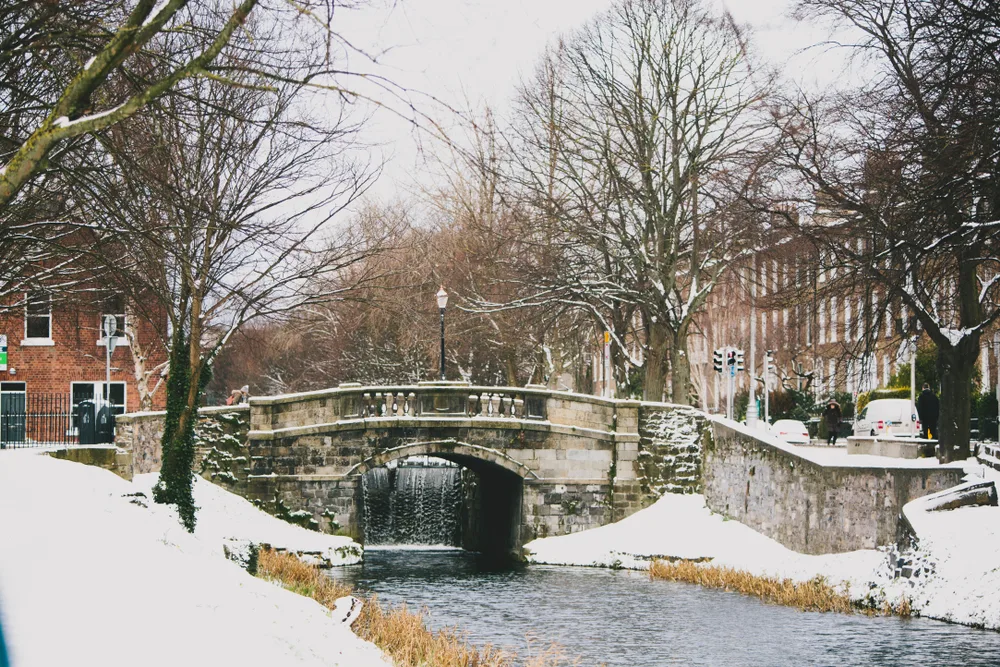
Rita Slattery/Shutterstock
The cheapest time to visit Dublin is in the winter, but you can also find good deals in mid-spring (April–May). The absolute cheapest time to visit Dublin is in the winter months of January and February when there is the least demand for travel to the city.
Visitors can find hotel room discounts of 25%–45%, especially if they book in advance. January and February are also some of the cheapest months to book flights to Dublin.
If you want to combine trip discounts with decent weather, then your best bet is to visit in mid-spring (from the end of March to May).
The weather is still unpredictable but a lot more pleasant than winter, with average high temperatures in April reaching 53 degrees Fahrenheit. After the summer months, April and May are the sunniest, making them great for exploring the parks or the Dublin Zoo.
Although the discounts aren’t as steep as they are in the winter, you can still find some discounts on hotel rooms, up to 15%–25%. Surprisingly, May is one of the cheapest months to fly into Dublin, allowing you to save money on transportation.
You just have to avoid the major holidays in the spring. Easter weekend, whose date changes each year, and May 1st tend to be more expensive. St. Patrick’s Day is also very expensive (and rowdy), so avoid visiting in mid-March.
Least Busy Time to Visit Dublin
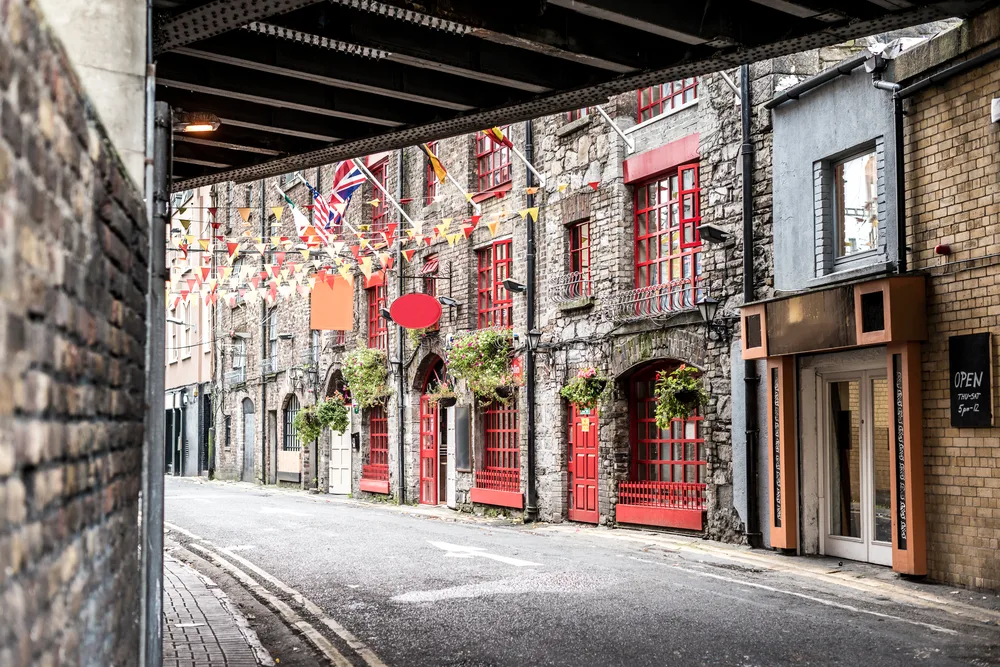
Massimofusaro/Shutterstock
Winter receives the fewest visitors in Dublin, but fall (September–October) also offers a welcome break from the peak crowds of the summer. Due to the gloomy weather, January and February receive the fewest visitors in absolute terms.
You won’t find much to be gloomy about as you waltz into the Book of Kells or Trinity College Reading Room without waiting in line, even if the skies outside are gloomy.
If you are hoping to combine a trip to Dublin with a trip to some more weather-dependent locations in rural Ireland or want to experience the city’s cultural calendar before the winter lull, then fall is a good compromise season to visit.
By September, the crowds diminish as kids go back to school, and the city returns to a normal pace of life by October.
The benefit of visiting in fall is that this is the liveliest season for Dublin’s cultural scene. While cultural events and festivals do bring more people to town during that season, crowds never approach their worst as in summer.
Plus, it’s worth having a few more people around to get to enjoy events like:
- Dublin Fringe Festival (September)
- Liffey Swim (September)
- Dublin Theatre Festival (October)
- Dublin Festival of History (September/October)
Worst Time to Visit Dublin
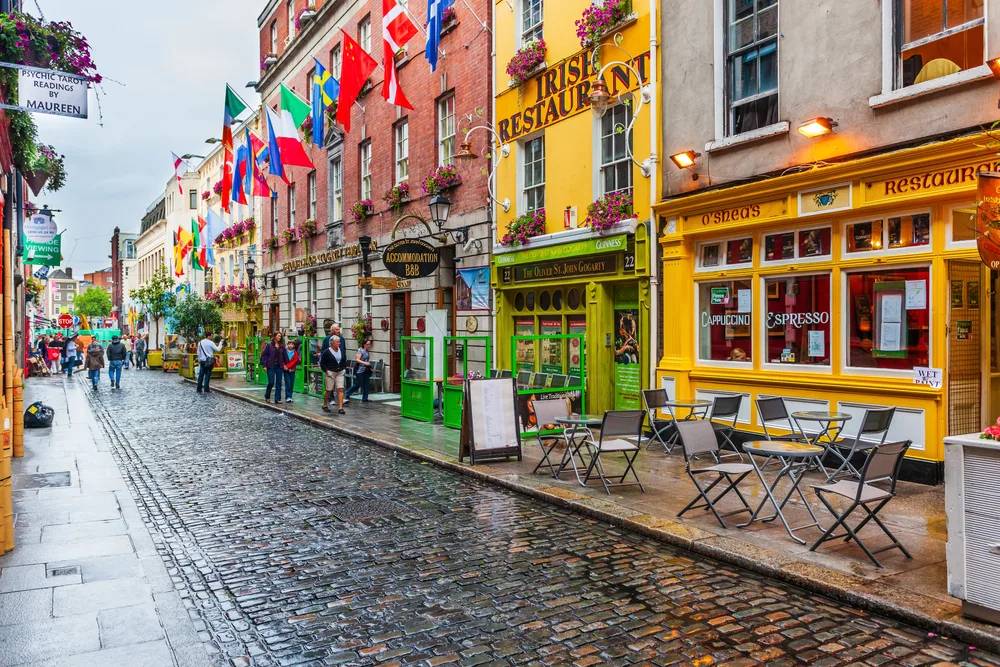
SCStock/Shutterstock
The worst time to visit Dublin is the city’s long winter (November–March), which can get dreary and rainy, getting in the way of your ability to explore. Winter is when Ireland’s infamous weather is at its worst.
Temperatures may not seem that cold on paper, with average temperatures in January and February around 43 degrees Fahrenheit.
However, the wind and frequent rain make it feel much colder and unpleasant to be outside. When we say rain, we mean there will be lots of it. December and January are Dublin’s rainiest months, with an average of 12 days of rain per month.
Even on days when there aren’t downpours, expect cloudy, overcast weather and frequent fog or drizzle. This is particularly frustrating if you were hoping to get into nature, as the time is hardly ideal.
However, winter is a good time for a city break if you don’t mind the weather. You will save a lot of money on your hotel and get to avoid lines even at the most popular city attractions.
The weather also doesn’t matter too much when there is plenty to do indoors. Warm up with a pint of Guinness at one of Dublin’s many bars, duck into a museum, or catch a trad session at a live music venue.
Winter is a bit quieter when it comes to events and festivals, but the season is bookended by two festive times. Christmas in Dublin is magical with the lights and celebrations, even if it is rainy instead of snowy, while raucous St. Patrick’s Day breaks up the prolonged gloom of March.
Dublin by Month: Climate & Activities
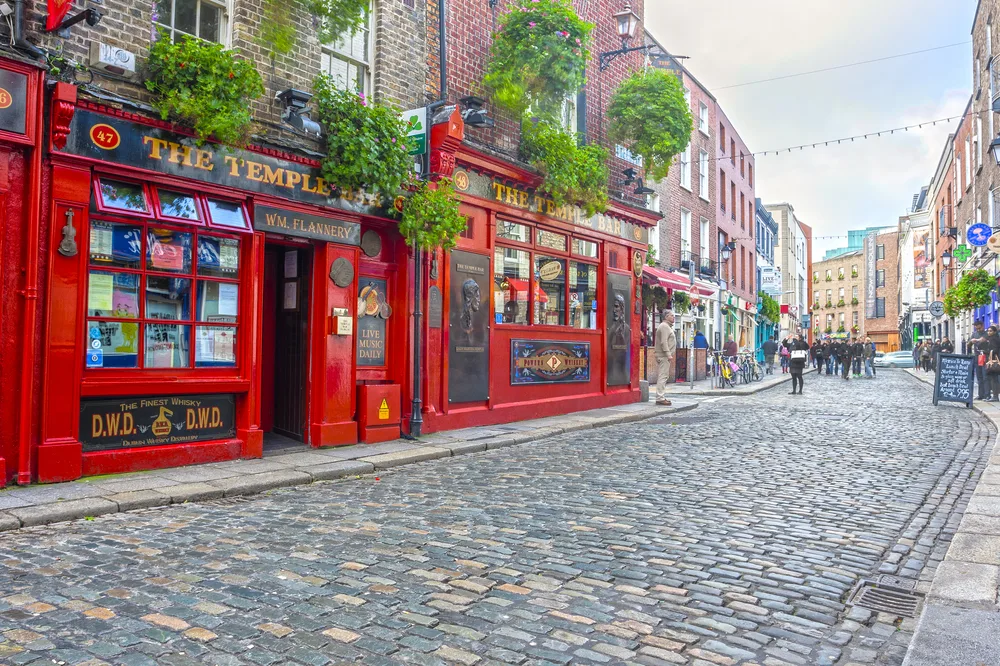
Dublin, Ireland – Oct 18, 2014: People around The Temple Bar in Dublin, Ireland on October 18, 2014/Aitormmfoto/Shutterstock
Still unsure about the best time to visit Dublin? Take a look at our summary of the weather and climate by month below:
January
Winter temperatures in Dublin range from 1 to 8°C (34-46°F). January is a great time to explore indoor attractions such as the Guinness Storehouse, visit historic sites like Dublin Castle, and experience the city’s cozy pubs and live music scene.
February
Similar to January, February maintains cool temperatures between 1 to 9°C (34-48°F). Visitors can enjoy cultural events like the Dublin International Film Festival, explore the National Museum of Ireland, and partake in traditional Irish music sessions.
March
In March, spring begins in Dublin, with temperatures range from 2 to 10°C (36-50°F). This time is perfect for taking scenic walks in Phoenix Park, celebrating St. Patrick’s Day with the lively parade, and exploring the Temple Bar district.
April
Spring temperatures in Dublin range from 4 to 12°C (39-54°F). It’s an ideal time for visiting the Dublin Zoo, exploring the Botanic Gardens, and enjoying the emerging spring blooms in St. Stephen’s Green.
May
May sees temperatures ranging from 7 to 15°C (45-59°F). It’s a great month for attending literary events like the Dublin Writers Festival, exploring Dublin’s coastline, and experiencing the lively atmosphere at traditional pubs.
June
Summer arrives with temperatures between 10 to 18°C (50-64°F). June offers opportunities for outdoor activities like hiking in the Dublin and Wicklow Mountains, attending the Bloomsday Festival, and enjoying street performances in Temple Bar.
July
July maintains mild temperatures from 12 to 20°C (54-68°F). It’s a popular month for outdoor festivals such as the Dublin LGBTQ+ Pride Festival, exploring the historic Kilmainham Gaol, and taking day trips to nearby coastal towns.
August
Temperatures in August range from 12 to 19°C (54-66°F). It’s an excellent time for visiting the Dublin Castle Gardens, attending the Dublin Horse Show, and exploring the vibrant neighborhoods like Rathmines.
September
As fall begins, temperatures range from 10 to 17°C (50-63°F). September offers a pleasant transition, with opportunities for attending the Dublin Fringe Festival, exploring the Dublin Docklands, and enjoying the city’s parks in autumn.
October
October sees temperatures ranging from 7 to 14°C (45-57°F). It’s a great month for attending the Bram Stoker Festival, exploring the Chester Beatty Library, and taking guided tours to learn about Dublin’s history.
November
Fall temperatures range from 3 to 10°C (37-50°F). November is perfect for attending the Dublin Book Festival, exploring the National Gallery of Ireland, and experiencing the city’s vibrant pub culture.
December
In December, winter returns to Dublin, with temperatures ranging from 2 to 8°C (36-46°F). December brings opportunities for festive activities such as the Dublin Christmas Market, exploring the Winter Lights Dublin City event, and enjoying holiday performances.
Frequently Asked Questions
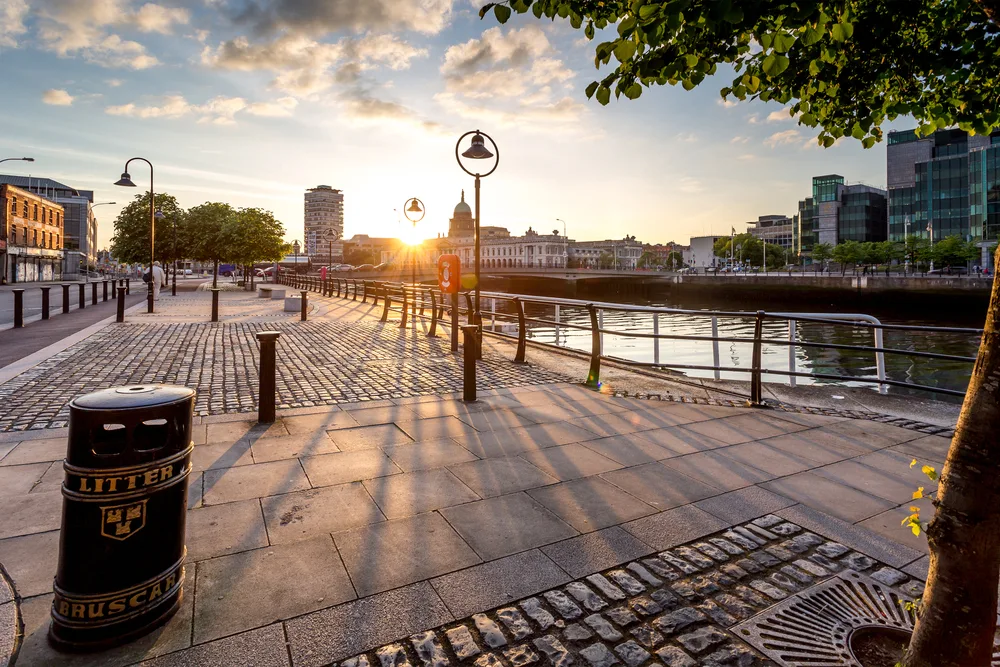
Kanuman/Shutterstock
For more information about Dublin, check out these commonly asked questions:
What month is best to visit Dublin?
The best month to visit Dublin is June, which has great weather and great events but not as many crowds as July or August.
What is the best month to go to Ireland?
The best months to go to Ireland overall are May and June, which have the best weather and longest daylight for exploring.
How many days in Dublin is enough?
You need at least two days to explore Dublin. It’s a fairly compact city, so you’ll see most of the major sights during that time.
What is the rainiest month in Dublin?
October is actually the rainiest month in Dublin, with the most rainy days and the highest volume of rainfall. January and December follow closely behind.
Is Dublin worth visiting?
Dublin is worth visiting if you’re coming to Ireland to understand the country’s history and check out the many cultural events.
So, What’s the Best Time to Visit Dublin?
Dublin has the best weather and best events in the summer, while winter is perfect for budget travelers. Spring and fall are a good compromise between okay weather and fewer crowds.
So, with so much to see and do and countless amazing times to visit, what are you waiting for — book your trip today and experience for yourself all that Dublin has to offer. Happy travels!



